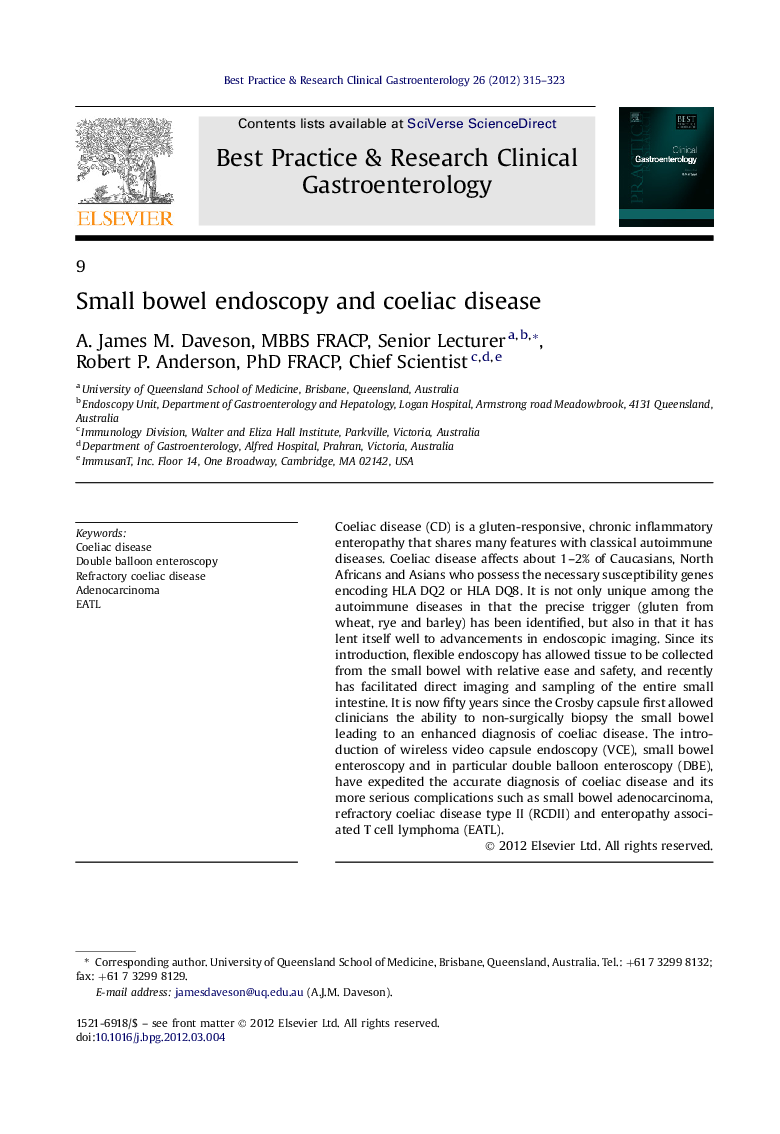| Article ID | Journal | Published Year | Pages | File Type |
|---|---|---|---|---|
| 3254256 | Best Practice & Research Clinical Gastroenterology | 2012 | 9 Pages |
Abstract
Coeliac disease (CD) is a gluten-responsive, chronic inflammatory enteropathy that shares many features with classical autoimmune diseases. Coeliac disease affects about 1-2% of Caucasians, North Africans and Asians who possess the necessary susceptibility genes encoding HLA DQ2 or HLA DQ8. It is not only unique among the autoimmune diseases in that the precise trigger (gluten from wheat, rye and barley) has been identified, but also in that it has lent itself well to advancements in endoscopic imaging. Since its introduction, flexible endoscopy has allowed tissue to be collected from the small bowel with relative ease and safety, and recently has facilitated direct imaging and sampling of the entire small intestine. It is now fifty years since the Crosby capsule first allowed clinicians the ability to non-surgically biopsy the small bowel leading to an enhanced diagnosis of coeliac disease. The introduction of wireless video capsule endoscopy (VCE), small bowel enteroscopy and in particular double balloon enteroscopy (DBE), have expedited the accurate diagnosis of coeliac disease and its more serious complications such as small bowel adenocarcinoma, refractory coeliac disease type II (RCDII) and enteropathy associated T cell lymphoma (EATL).
Related Topics
Health Sciences
Medicine and Dentistry
Endocrinology, Diabetes and Metabolism
Authors
A. James M. (Senior Lecturer), Robert P. (Chief Scientist),
